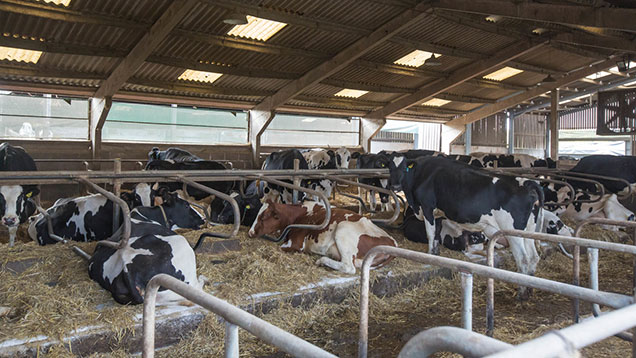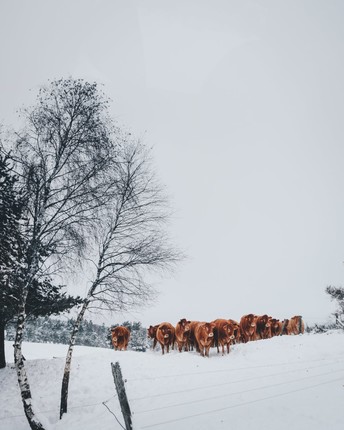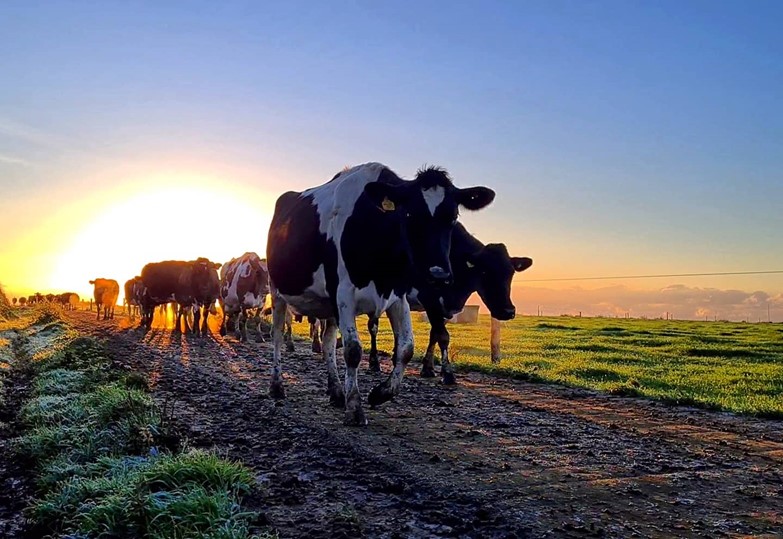Dairy cow housing – your pre-winter checklist..
With nights drawing in, the pressure is on to preserve available grazing for spring. It’s inevitable that as winter approaches, more dairy herds will be spending time inside.
But while housing your herd can relieve you of certain challenges, it can present a whole new set of hurdles to overcome. Winter housing conditions play a fundamental role in overall cow health and well-being and the impact on efficiency is marked.
Learn more about this in our winter housing podcast or read on for our full checklist to prepare your herd for the season ahead.
Make a seamless move to winter housing
As any experienced dairy farmer will confirm, cows don’t react kindly to sudden change and even the simple act of moving from outside to inside housing systems can be hugely stressful.
This can negatively impact the immune system and Body Condition Score (BCS). And even just a temporary impact in these areas can lead to a decline in fertility and milk yields for months to come.
Aim for the three ideals – warmth, shelter and comfort:
Warmth:
A healthy, content cow’s core body temperature hovers around the 38oC mark, the harder they have to work to maintain this temperature, the more energy is diverted away from growth or BCS maintenance in order to stay warm. So the air temperature in your dairy housing is vital.
High moisture and humidity are also factors to avoid. With moisture reducing the ambient air temperature, in moist or humid conditions your herd will have to work harder to maintain that core body temperature.
Top tip: Repair leaky downpipes and guttering, broken water feeders, and blocked drains in the yard - which may lead to flooding. Avoid over-soaking feed areas when it comes to cleaning and ensure adequate drainage in livestock pens to ensure as much moisture is eliminated from the housing environment as possible.
Circulation of fresh air will help to maintain temperature and humidity and at the same time, remove pathogens and pollutants and eliminate stagnant air.
You can regulate humidity in your dairy housing with a ventilation fan or extractor fan, however, creating the ideal natural ventilation in your winter housing is easier than you think - by applying some simple physics known as the stack effect.
The stack effect
Warm air from your cattle rises, and leaves through outlets, creating negative air pressure that draws in fresh air from outside via inlets.
Learn how to create the stack effect here >>>
Shelter
As well as offering shelter from precipitation, which will of course drag your cow’s core temperature down, your winter housing should provide adequate protection from the wind and moving air.
Important: regardless of your ventilation system, ensure there are no draughts at herd height. Moving air will reduce body temperature.
Be wary of wind – a stiff winter wind can have a huge impact on ambient air temperature.
Did you know? A breeze of just two metres per second can reduce a cow’s critical temperature by as much as 9%.
 Of course, it’s equally important to avoid overheating your herd – with cows being so susceptible to heat stress.
Of course, it’s equally important to avoid overheating your herd – with cows being so susceptible to heat stress.
‘Balance’ is the key word when it comes to perfecting the temperature in your herd’s winter housing.
Comfort
Cramped conditions pose a risk to herd health and well-being.
Lameness can be a common problem when your herd is housed. Make sure cows have plenty of space to move and try and minimise the amount of standing time.
For Holsteins, a 172cm cubical bed from heel stone to brisket board, with a head rail that is 127cm from the floor, is the optimum amount of space to encourage your girls to take the weight off their feet.
Lack of feed barrier space, with cows pushing each other for feed, also increases the risk of lameness. Aim for a minimum of 76cm of feeding space per cow. You can further reduce the threat of lameness, particularly lameness caused by digital dermatitis by reviewing your foot bathing strategy.
Foot bathing tips:
- Make sure the floor of your footbath is flat, even, and non-slip.
- The bath should also be at least three metres in length to allow cows to plod through with a minimum of two dips for each hoof.

Monitor mobility
Make sure at least one member of your dairy team is trained to score mobility using the AHDB dairy mobility system. It will help you catch developing mobility issues, early – making treatment much easier.
Alternatively, the availability of dairy tech that helps keep closer tabs on lameness is now readily available – with tech such as CattleEye working in conjunction with CCTV to monitor and alert dairy farmers of changes in the gait of each and every cow in the herd, quicker than might be detected by even the most experienced herds-person.
